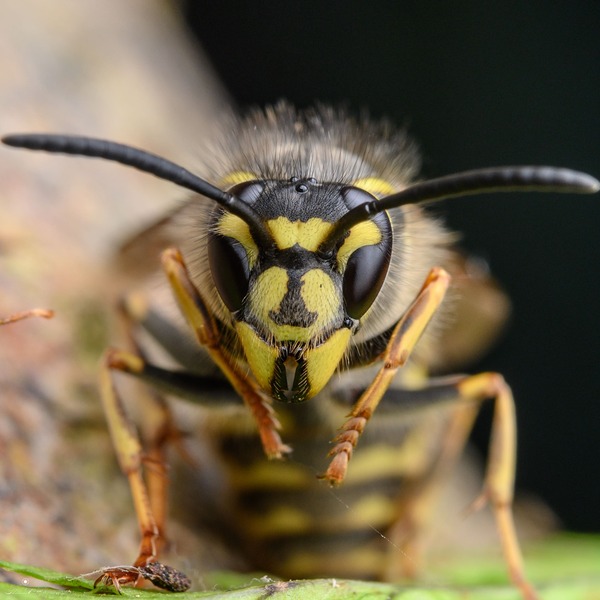Fleas are small, wingless insects that belong to the order Siphonaptera. While they may seem like minor nuisances, especially when found on household pets, understanding their lifecycle is crucial for effective pest management.
Fleas undergo a complete metamorphosis, progressing through four distinct stages: egg, larva, pupa, and adult. Each stage presents unique challenges and opportunities for intervention. In this comprehensive guide, we will explore the intricate lifecycle of fleas, shedding light on their biology, behavior, and practical implications for control.
-
Egg Stage:
The lifecycle of a flea begins with the egg. Female fleas lay eggs after consuming a blood meal from a host, typically a mammal like a dog or cat. These tiny, white eggs are often laid in clusters in the fur of the host or in its resting areas, such as bedding or carpets. The female flea can lay hundreds of eggs over her lifetime, making rapid population growth possible.
Eggs typically hatch within 1 to 12 days, depending on environmental conditions such as temperature and humidity. High humidity levels are favorable for egg development, whereas extreme temperatures can inhibit hatching. Once hatched, the eggs release larvae, marking the transition to the next stage of the flea lifecycle.
-
Larval Stage:
Flea larvae emerge from the eggs and are immediately tasked with finding food and shelter. Unlike adult fleas, larvae are photophobic and avoid light, preferring dark, humid environments. Common hiding spots include carpet fibers, floorboard cracks, and outdoor areas with dense vegetation.
Flea larvae are small, ranging from 1 to 5 millimeters in length, and possess elongated bodies with bristles and hairs. They are also legless, relying on a unique movement pattern known as “looping” to navigate their surroundings. Larvae feed on organic matter, including flea feces (which contain partially digested blood), skin cells, and other debris. This scavenging behavior sustains their growth and development.
The larval stage typically lasts for 5 to 11 days, although it can extend for several weeks under unfavorable conditions. During this time, larvae molt several times as they grow, shedding their exoskeletons to accommodate their increasing size. Once fully developed, larvae enter the pupal stage, where they undergo dramatic transformation.
-
Pupal Stage:
The pupal stage is a critical period in the lifecycle of fleas, representing a transitional phase between larval and adult forms. Flea pupae are encased in a cocoon constructed from silk and debris, providing protection from external threats. The cocoon serves as a sanctuary where pupae undergo metamorphosis and develop into adult fleas.
Pupal development is highly variable and influenced by environmental factors such as temperature, humidity, and the presence of host animals. Under optimal conditions, pupae can emerge as adult fleas within as little as 5 to 14 days. However, pupal development can be prolonged for several months in response to environmental stressors or the absence of a suitable host.
One fascinating aspect of the pupal stage is the ability of fleas to remain dormant until conditions are favorable for emergence. This dormancy, known as “pupal diapause,” allows fleas to survive adverse conditions and synchronize their emergence with the presence of potential hosts. Once mature, adult fleas emerge from their cocoons ready to seek out blood meals and reproduce, completing the lifecycle cycle.
-
Adult Stage:
The adult stage is the final phase of the flea lifecycle and the most familiar to pet owners and pest control professionals alike. Adult fleas are highly specialized parasites adapted for feeding on the blood of their hosts. Using specialized mouthparts designed for piercing and sucking, fleas puncture the skin of their host to access blood vessels, ensuring their survival and reproductive success.
Adult fleas are agile and equipped with powerful hind legs that enable them to jump impressive distances relative to their size. This remarkable jumping ability allows fleas to move between hosts and navigate their environment with ease. Once onboard a host, fleas begin feeding within minutes, ingesting large volumes of blood to sustain their energy needs.
Reproduction is a primary objective for adult fleas, driving their behavior and population dynamics. Female fleas require a blood meal to produce viable eggs, while males engage in mating behaviors to fertilize females. Fleas are capable of rapid reproduction, with a single female laying hundreds of eggs throughout her lifespan.
Conclusion:
The lifecycle of fleas is a testament to their adaptability and resilience as parasites. From humble eggs to agile adults, fleas undergo a remarkable transformation guided by instinct and environmental cues.
Understanding the intricacies of the flea lifecycle is essential for effective pest management strategies, whether in households, veterinary clinics, or public health settings.
By targeting vulnerable stages of the lifecycle and implementing integrated pest management practices, we can mitigate flea infestations and protect the well-being of both humans and animals.
Infest Pest Control is a reputable company known for its expertise in managing flea infestations and other pest-related issues. With a focus on integrated pest management (IPM) strategies, Infest Pest Control offers comprehensive solutions tailored to each client’s unique needs.
When it comes to addressing flea infestations, Infest Pest Control employs a multifaceted approach that targets every stage of the flea lifecycle. Contact us today. By understanding the biology and behavior of fleas, our technicians can develop effective treatment plans that deliver long-lasting results.


